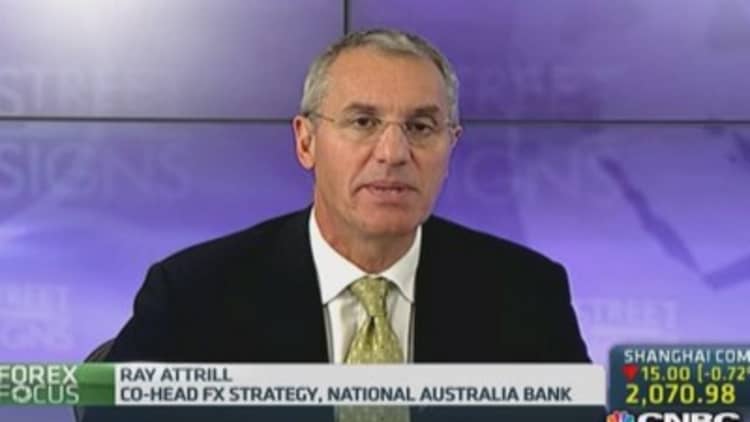
A sharp downward revision to the International Monetary Fund's (IMF) U.S. growth forecast is a surprise but doesn't necessarily mean that interest rates in the world's number one economy will stay low for longer than anticipated, analysts say.
The IMF on Monday cut its U.S. gross domestic product (GDP) growth forecast to 2 percent for 2014 from 2.8 percent, estimated that U.S. inflation will stay below the Federal Reserve's 2 percent target through 2017 and said the Fed should keep its key rate near zero longer than markets expect.
Read MoreIMF calls on US to hike minimum wage
Some analysts challenged that view saying signs of stronger-than-expected growth in the U.S. economy pointed to monetary tightening sooner rather than later.
"Clearly those IMF comments hit a little bit of a nerve but if you look at the incoming data flow, especially the numbers we got yesterday on production, home builder sentiment and the Empire State survey, they all paint a picture of an economy growing close to a 3 percent clip," Ray Attrill, co-head of currency strategy at National Australia Bank, told CNBC.
"This is above trend for the U.S. so I'm not sure these downgrades to the outlook are warranted," he added.
Data released on Monday showed May industrial production increased a monthly 0.6 percent, home builder sentiment surged in June and the New York Federal Reserve's Empire State index of business conditions in June rose to a four-year high.
Read MoreUS manufacturing output increases solidly in May
"The IMF downgraded its U.S. growth forecast to 2.0 percent for 2014, and suggested that labor market issues mean rates can stay at zero for longer than the mid-2015 date priced by markets," analysts at Mizuho Corporate Bank said in a note. "Still, it is hard to keep a lid on rate expectations with yesterday's U.S. data releases."
The Fed kicks off a two-day meeting later on Tuesday and is widely expected to trim back its bond buying program by another $10 billion. That would take the monthly asset-purchase program to $35 billion from $45 billion.
It is also seen cutting its 2014 growth forecast following a negative reading for first quarter GDP, but paring back its expectation for unemployment which could encourage policy makers to bring forward their expectations for hiking short-term rates. The Fed has a 2014 GDP forecast of 2.8 to 3 percent.
A majority of Wall Street's top bond firms don't see the Federal Reserve raising rates before the second half of next year, a Reuters survey earlier this month showed.
Read MoreThis is what could ruffle markets this week
"The risk is that we see commentary out of the Fed that gives the market more firmly a sense of the end of tapering sooner rather than later and also when the first rate hike comes," said Attrill at National Australia Bank.
John Gorman, head of U.S. dollar rates trading, APAC, at Nomura Securities in Tokyo told CNBC that while there was a concern that the Fed could be a bit more hawkish at the end of this week's meeting, the central bank had plenty of time to signal a rise in rates since inflation pressures remained muted.
"The economic data has been very good and yesterday's numbers were a great example of that. All this leads to better economic growth," he said. "But at the end of the day, what matters is inflation. And until we see inflation rear its head, we're not going to see Fed projections hiked any time soon."


